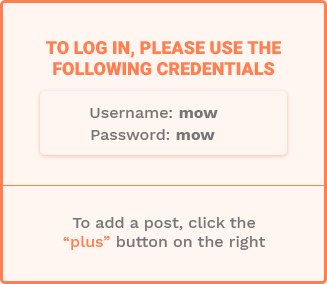Now Reading: Ellipsis: Simplify Your Writing with This Handy Trick
-
01
Ellipsis: Simplify Your Writing with This Handy Trick
Ellipsis: Simplify Your Writing with This Handy Trick

Ellipsis: Simplify Your Writing with This Handy Trick
Ever wondered how to make your sentences shorter without losing their meaning? The answer is ellipsis, a tool that makes your writing clearer and easier to read. It’s not the same as the punctuation mark (…), but rather about leaving out words that are already understood.
This trick can turn long sentences into shorter, more natural ones. For example, “She said she would call me back” becomes “She said she’d call back.”

Ellipsis is not just for casual talks—it’s a key to writing well. It helps writers make their sentences feel natural and to the point. But, many think it’s only for casual writing and worry it might make things unclear in formal texts.
Learn how experts use ellipsis to make their writing clear and avoid confusion.
Key Takeaways
- Ellipsis streamlines writing by removing redundant words implied by context.
- It’s distinct from the punctuation mark called ellipses (…).
- Used correctly, it enhances readability without sacrificing meaning.
- Common in both everyday speech and formal writing styles.
- Misuse can cause confusion if context isn’t clear.
What Is Ellipsis in Grammar?
Understanding ellipsis definition starts with its core function. It omits words that listeners or readers can infer from context. This tool makes communication faster without losing meaning.
The Definition of Ellipsis
Ellipsis happens when words are left out of a sentence. Their meaning is clear from the context. For example: “I prefer coffee; she, tea.” Here, “prefers” is left out but understood. This ellipsis definition works for both spoken and written language.
Ellipsis vs. Ellipses (The Punctuation Mark)
| Concept | Example |
|---|---|
| Ellipsis (grammatical omission) | “We’re meeting at 3 PM. Can you make it?” (Time is stated once) |
| Ellipses (punctuation) | “The report… was incomplete.” (Three dots denote missing text) |
Why Ellipsis Matters in Communication
Economical writing uses ellipsis to avoid repetition. For example, in dialogue: “I’m going to the store. Want anything?” The second speaker omits the verb but keeps the message clear. Misusing ellipsis punctuation can confuse readers, so mastering its rules is key.
The Purpose Behind Omitting Words
Ellipsis helps make communication quicker without losing its meaning. It’s a way languages have evolved to be both brief and clear. By leaving out unnecessary words, we focus on the important stuff.
- Shortening responses: “She asked where? I replied, ‘The park.’”
- Connecting ideas after conjunctions: “We can walk or drive—your choice.”
- Comparisons: “His speech was clear; hers, muddled.”
| Purpose | Example |
|---|---|
| Efficiency | “They’ll meet at noon—I’ll call later.” |
| Shared context | “Did you finish?—Almost.” |
| Emphasis | “She passed the test; he, unfortunately, did not.” |
Using ellipsis well means trusting your audience to fill in the gaps. But, using it too much can lead to confusion. It’s all about using it wisely to make your writing better.
“Ellipsis isn’t about laziness—it’s about strategic omission,” noted linguists studying conversational patterns.
Getting good at using ellipsis means finding the right balance. It’s about cutting out the fluff and keeping your writing clear and concise. This skill is key for both formal and casual writing.
Common Types of Ellipsis in Everyday Language
Ellipsis makes talking easier by leaving out some words. Let’s see how it works in everyday talk:
Situational Ellipsis in Conversations
When we talk, we often skip words because we know what the other person means. Here are some examples:
- Waiter: “Coffee preference?”
Customer: “Black.” (omits “I want my coffee…”) - Driver: “Emergency?”
Responder: “Fire!” (no need for “There’s a…”)
Structural Ellipsis in Formal Writing
In formal writing, rules help decide what words to leave out. Here’s a comparison:
| Original Sentence | Ellipsis Version |
|---|---|
| I can help you if you want me to help you. | I can help you if you want. |
| She will attend the meeting or she won’t. | She will attend the meeting or not. |
Textual Ellipsis Across Paragraphs
Long texts save space by skipping repeated information. A report might start with:
“The study found higher sales. Researchers linked this to improved marketing strategies.”
The second sentence omits “The study found” since context remains clear.
Mastering Ellipsis in Responses and Questions
Good communication needs a shared understanding. How to use ellipsis in questions and answers makes talking easier and clearer. Let’s look at how and when to use them.
Question-Answer Ellipsis Patterns
When answering, we often leave out parts of the question. Here are some examples:
- Yes/No Questions: “Will you join us?” → “Probably.” (omits “join us”)
- Wh-Questions: “Where did she go?” → “To the store.” (drops verb “went”)
- Alternative Questions: “Coffee or tea?” → “Tea.” (skips redundant options)
How Context Creates Meaning
Context is key to understanding. For example:
“Did you finish the report?”
“Not yet.”
This answer implies you’re still working on it. Without knowing the deadline, it might be confusing. Ellipsis examples like this show how important shared knowledge is. Misunderstandings happen when we don’t have enough context. Try to understand these:
- “Can you help?” → “Maybe later.” (omits “help”)
- “Should I attend?” → “Probably not.” (drops the verb “should”)
Knowing these patterns helps us talk clearly and naturally.
Using Ellipsis After Conjunctions
Ellipsis rules make sentences clearer by leaving out words after “and,” “but,” or “or.” For example, “She likes apples and oranges” is simpler without the second “likes.” This works when both parts of the sentence have the same verb.
- Ellipsis examples with “and”: “They will eat pizza and pasta” (omits “eat”).
- Examples with “or”: “Bring a pen or pencil” (omits “bring”).
- With “but”: “He’s tall but (he’s) quiet” maintains parallel meaning.
Ellipsis rules need both parts to have the same structure to avoid confusion. For instance, “She runs faster than him” uses ellipsis correctly. But, “She eats cereal but milk” is unclear because it doesn’t match the first part’s structure.
Formal writing might not use ellipsis for clarity. But, in everyday talk, it makes things easier. Remember, using ellipsis wrong can lead to confusion. Always check if the missing words fit the first part of the sentence.
Try to find pairs of conjunctions where ellipsis is used. For example, “She sings and dances” is clearer without “she” and “sings.” Learning this skill helps make your writing more concise without losing clarity.
Ellipsis in Comparisons: Creating Concise Statements

Ellipsis makes comparisons shorter by leaving out repeated words. This method keeps things clear and avoids saying the same thing twice. It’s useful in “than” and “as” comparisons.
Than/As Constructions
When we compare things, we often use than or as. If words repeat, we can leave them out after the first part. For example, “She sings better than I [sing].” Here, sing is left out after than.
Comparative Ellipsis Examples
| Original | With Ellipsis | Explanation |
|---|---|---|
| “He is taller than she is” | “He is taller than she” | Omits is after than |
| “This report is as detailed as the previous one” | “This report is as detailed as the previous” | Removes one without changing meaning |
Common Mistakes to Avoid
- Missing parallel structure: “She writes better than me” (should be “than I do”).
- Unclear references: “More people attended than last year” (add “did” for clarity).
- Omitting required words: “He runs faster than anyone” (needs “He runs faster than anyone else“).
Getting good at using ellipsis in comparisons is about finding the right balance. It’s about being brief without losing clarity. Look at ellipsis examples to make sure you’re not confusing your readers.
The Grammatical Rules Governing Ellipsis
Understanding ellipsis rules is crucial for using ellipsis in writing correctly. These rules help keep the meaning clear when words are left out. Key points include matching sentence parts and ensuring the words left out match the ones before.
- Licensing: Ellipsis needs a phrase to make sense.
- Directionality: Ellipsis points forward or backward based on the text.
- Island Constraints: Some phrases, like relative clauses, can’t be left out.
For example, “I can help you if you want me to help you” can be shortened to “I can help you if you want.” This works because the missing part is clear from the context. But, if you break these rules, it can lead to confusion.
Writers should always check that what’s left out makes sense. Not following these rules can make things unclear. To get better, practice spotting when it’s okay to leave out words by looking at sentence structure.
How Ellipsis Enhances Your Writing Style
Ellipsis in writing makes your text clearer and more concise. It helps writers improve their style in several ways:
Creating Natural-Sounding Dialogue
Dialogue sounds real when you cut out unnecessary words. Let’s look at some examples:
| Original Dialogue | With Ellipsis |
|---|---|
| “Do you want to go to the park today?” | “Wanna go to the park?” |
| “I think we should discuss this further at the meeting.” | “Let’s discuss this at the meeting.” |
Improving Reading Flow
- Eliminates unnecessary words to keep readers engaged
- Makes sentences smoother without losing their point
- Helps stories flow better
Achieving Brevity Without Sacrificing Clarity
Using ellipsis well means knowing your audience. Here are some examples:
| Verbose Version | Ellipsis-Enhanced |
|---|---|
| “The report showed declining sales in Q3. The sales team reviewed the report and found issues.” | “The report showed declining Q3 sales. The team reviewed it and found issues.” |
In academic writing, you might need more detailed sentences. But in creative writing, less is often more. Read your sentences out loud to check if they’re clear.
Common Mistakes When Using Ellipsis
Knowing the rules for ellipsis helps avoid confusion. Here are tips to avoid common errors.
Creating Ambiguity Through Poor Ellipsis
Ellipsis works best when the meaning is clear. For example: A: Who broke the vase? B: Tom. Here, “Tom” is enough because it’s clear who broke the vase. But without context, “Tom” alone might confuse people. Always make sure the missing words can be logically filled in.
Ambiguity happens when important details are left out too much.
Overusing Elliptical Constructions
Using too many omissions can make text feel choppy. It leaves sentences feeling incomplete. Here’s how to avoid it:
- Use ellipsis only when context is obvious
- Avoid multiple omissions in a single paragraph
- Balance elliptical phrases with full sentences

Another mistake is mixing up the ellipsis symbol (…) with grammatical ellipsis. The symbol signals pauses or trailing off. But grammatical ellipsis removes words on purpose. Use the symbol only for punctuation, not for removing words.
For example, when quoting a speech fragment: “I can’t believe… but never mind.”
Mastering ellipsis rules means knowing when to omit and when to clarify. Avoid confusion, don’t overdo it, and always think about your audience. Being precise keeps your message clear.
Ellipsis Across Different English Varieties
Ellipsis rules change from one English dialect to another. In American English, it’s common to leave out verb phrases: “She likes coffee, I tea.” British speakers often skip articles in comparisons, like “He’s taller than his sister.” Australian English might use ellipsis in questions: “Going to the park later?” with implied verbs.
- American English: Frequent verb ellipsis in parallel clauses
- British English: Article omission in comparative structures
- Canadian English: Blends both patterns depending on region
- Australian English: Conversational ellipsis in questions
“Understanding these variations helps avoid misunderstandings,” says Dr. Laura Thompson, linguistics professor at Oxford University. “Ellipsis reveals cultural communication styles.”
ESL learners need to learn about regional ellipsis patterns to sound natural. For example, in informal U.S. speech, it’s common to omit “do” in questions like “Seen the new movie?” This might confuse learners who expect full structures. Writers should think about their audience—using British ellipsis rules for London journals versus American conventions for New York publications.
Mastery comes from observing native speakers. Canadian media shows how they switch between British and American patterns. Practicing with real materials like BBC transcripts or U.S. podcasts helps build intuition. Getting used to different English dialects makes you better at using ellipsis rules.
Practical Exercises to Master Ellipsis
Practice is key. These exercises use real-world ellipsis examples to help you feel confident in using how to use ellipsis right.
Identifying Ellipsis in Text
Analyze this dialogue:
A: “Can you finish by noon?”
B: “Yes, I can.”
What’s missing? The full sentence is “I can finish by noon.” The ellipsis cuts out the extra words, keeping it clear.
Rewriting Sentences Using Ellipsis
| Original | Revised |
|---|---|
| “Sarah knows more about history than he does.” | “Sarah knows more about history than he.” |
| “They’re leaving earlier than we planned.” | “They’re leaving earlier than we.” |
Each change cuts out the repeated verbs, keeping the meaning. Try rewriting sentences from books or news to get better.
Self-Assessment Questions
- Which is correct? “She read faster than I did” or “She read faster than I”?
- Identify the missing phrase in: “Do you want tea? No, I want coffee.”
- Is ellipsis okay in formal reports? Explain why or why not.
Answers and explanations come after each question. Keep track of your progress by comparing your answers to the model answers at the end of this guide.
Conclusion
Ellipsis meaning is about leaving out words to make communication clearer. It helps make writing sharp and focused. This is true for emails, essays, or just notes.
Using ellipsis right is key. Too much can cause confusion. But used well, it makes reading easier and messages clearer.
Getting good at using ellipsis takes practice. It’s about knowing when to leave out words. This skill makes your writing better over time.
Keep practicing to get better. Watch how experts use ellipsis in their work. This helps you use it right to share your ideas well.
Learning to use ellipsis well makes your writing clearer. It’s a powerful tool for better communication.
FAQ
Q: What is the meaning of ellipsis?
A: Ellipsis is when you leave out words that are clear from the context. This makes sentences shorter and more natural. It comes from the Greek word “élleipsis,” meaning “omission.”
Q: What is the difference between ellipsis and ellipses?
A: Ellipsis is about leaving out words in a sentence. Ellipses, marked by three dots (…), is a punctuation mark. It shows missing text in quotes or adds suspense.
Q: How can ellipsis enhance my writing?
A: Ellipsis makes your writing flow better by cutting out repetitive words. It keeps your writing clear and concise.
Q: Can you provide examples of ellipsis?
A: Sure! For example, “I can help you if you want me to help you” can be shortened to “I can help you if you want.” Another example is, “She likes apples and (she likes) oranges,” where the second mention of “she likes” is omitted.
Q: What are some common mistakes made when using ellipsis?
A: Common mistakes include making sentences unclear by leaving out too much. It’s important to use it wisely to avoid confusion.
Q: How does context affect the use of ellipsis?
A: Context is key to understanding ellipsis. It helps figure out which words can be left out. Without it, sentences can be confusing.
Q: Are there rules regarding the use of ellipsis?
A: Yes, there are rules. For example, the words left out must be clear from the context. Also, the sentence structure should stay the same for clarity.
Q: How is ellipsis used in formal writing?
A: In formal writing, ellipsis is used in consistent ways. It’s important to keep the text clear and structured.
Q: How can I practice mastering ellipsis?
A: Practice by spotting ellipsis in texts and rewriting sentences. Try exercises to test your understanding of ellipsis rules.
Q: Does ellipsis vary across English dialects?
A: Yes, ellipsis patterns vary across English dialects. Knowing these differences helps in writing for different audiences.






























